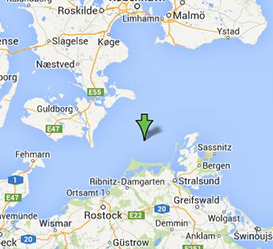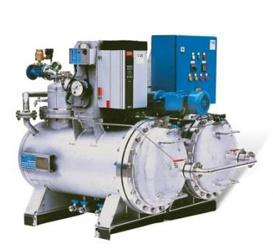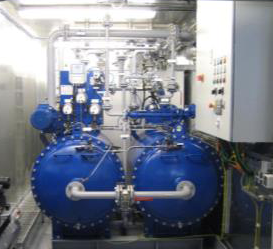2019-10-14

Initial Situation
Due to the change in German energy politics initiated trough the government, the importance of renewables energies has increased over the last years. In 2011 the first german commercial Offshore wind farm has been built in the Baltic Sea. The wind park consists out of 21 wind turbines, which produce energy for 50.000 households and saves 167.000 tons of CO2 in comparison to conventional energy production. Besides the 21 wind turbines a transformer station was installed.

Challenge
Every droplet of surface water (rain, spray, etc.) that hits the platform is collected in trays under the transformers. These waters may get contaminated with different types of particles and oils (eg. from leaks of transformers and restrictors) and needs to be treated before the operator of the platform is allowed to discharge the water into the sea again.
The maximum amount of remaining oil is strictly controlled by the environmental regulations set by the IMO MARPOL 107 (49).

Solution
The Filtration Group Deoiler 2000 with an output of 10 m³ per hour was delivered as containerized plug & play solution. A second container holds the complete discharging unit. The Deoiler 2000 can be remote monitored and operated. The separated media (oil and particles) are collected in tanks with level monitoring system. If the maximum is reached, the oil can be collected by a service boat to be disposed professionally onshore. The deoiled water is discharged into the Baltic Sea with remaining oil content according to the environmental regulations of the IMO MARPOL 107 (49).

Customer Value
Main advantages are reliable deoiling of the incoming surface water with no additional chemicals required, low lifetime costs due to low-maintenance operation and easy scheduled disposal of the separated oils thanks to automated remote monitoring and level control. Our customer has completely automatic control of the system with a small footprint and automated operation. Our system has keep the compliance with the required values of the IMO MARPOL107 (49).